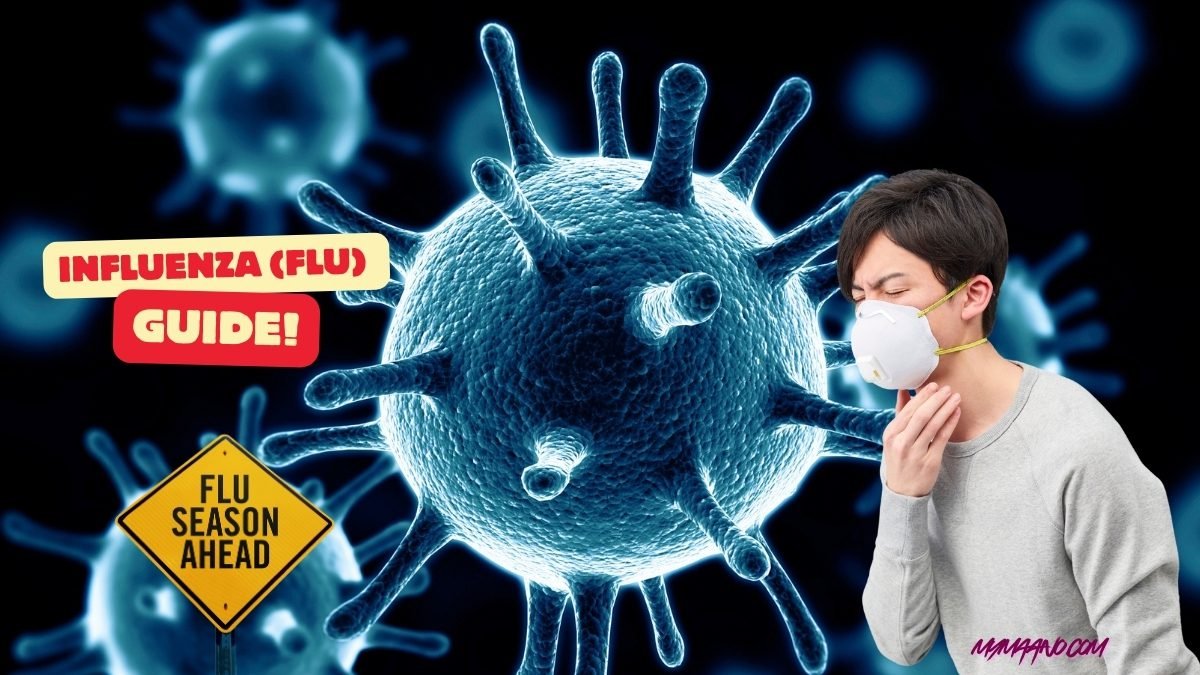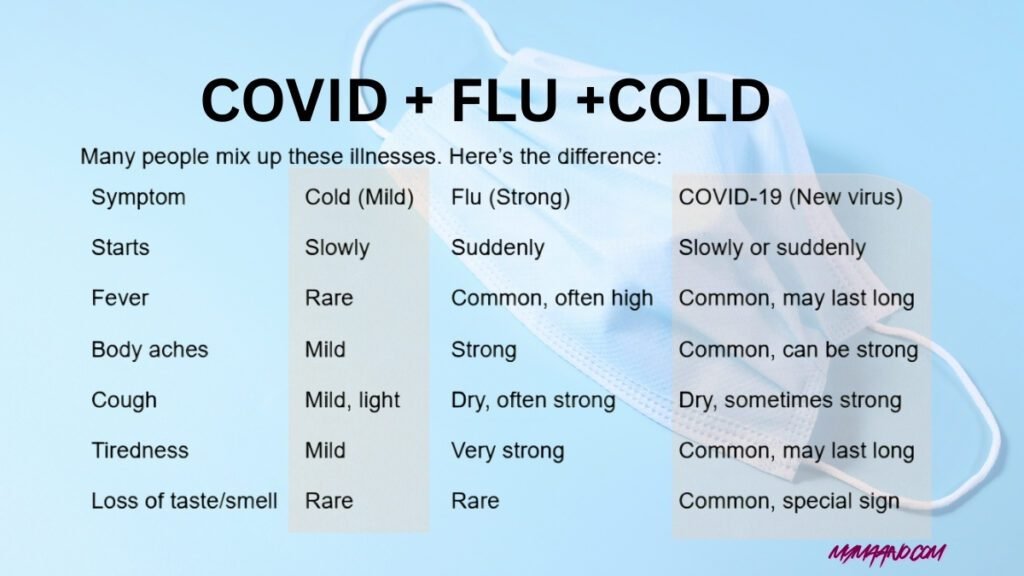Influenza (Flu) – Easy Guide
Introduction Influenza, or the flu, is a sickness that spreads from one person to another. It affects the nose,

Introduction
Influenza, or the flu, is a sickness that spreads from one person to another. It affects the nose, throat, and sometimes the lungs. The flu is stronger than a common cold. Every year, many people get the flu. Most people get better, but some can become very sick, especially children, older adults, and people with weak health.
What is the Flu?
The flu is caused by a virus. It spreads when a sick person coughs, sneezes, or talks. Tiny drops from their mouth or nose go into the air or onto things around them. If you touch these drops and then touch your face, you can get the flu.
Causes

- Viruses: Flu A and B cause most flu cases.
- Spread: By air (coughs, sneezes) or by touching things with the virus on them.
- Crowds: Flu spreads faster in busy places like schools or buses.
Symptoms of Flu
Flu signs often show 1–4 days after infection. Common symptoms are:
- High fever
- Chills and body pain
- Feeling very tired
- Headache
- Sore throat
- Stuffy or runny nose
- Dry cough
- Vomiting or diarrhea (more in children)
Who Gets Sick Easily?
- Children under 5 years (especially under 2)
- Adults over 65 years
- Pregnant women
- People with diseases like asthma, diabetes, or heart problems
- People with weak immune systems
Problems Caused by Influenza (Flu)
Flu can get worse and cause:
- Lung infection (pneumonia)
- Ear infection
- Bronchitis (coughing sickness)
- Worse health in people with asthma or heart disease

Flu vs. Cold vs. COVID-19
Many people mix up these illnesses. Here’s the difference:
| Symptom | Cold (Mild) | Flu (Strong) | COVID-19 (New virus) |
| Starts | Slowly | Suddenly | Slowly or suddenly |
| Fever | Rare | Common, often high | Common, may last long |
| Body aches | Mild | Strong | Common, can be strong |
| Cough | Mild, light | Dry, often strong | Dry, sometimes strong |
| Tiredness | Mild | Very strong | Common, may last long |
| Loss of taste/smell | Rare | Rare | Common, special sign |
👉 Cold = light sickness, runny nose, sneezing.
👉 Flu = sudden fever, pain, very tired.
👉 COVID-19 = flu-like but often with loss of taste/smell and longer sickness.
WHO – Coronavirus vs Cold vs Flu
How Doctors Know It’s Flu
Doctors can guess it’s flu from your signs, especially during flu season. Sometimes, they use tests to be sure.
Treatment
- Rest and drink water
- Take medicine for fever and pain (paracetamol, ibuprofen)
- Antiviral drugs (from doctor) may help if taken early
- Antibiotics do not work because flu is a virus
Mayo Clinic – Flu Treatment
How to Prevent Flu


- Get a flu vaccine every year
- Wash your hands often
- Cover your mouth when you cough or sneeze
- Stay away from sick people
- Eat healthy food, sleep well, and exercise
When to See a Doctor
- Trouble breathing
- Chest pain
- Constant vomiting
- High fever that won’t go down
- Flu gets better, then suddenly gets worse again
FAQs For Influenza (Flu)
1. Is flu the same as a cold?
No. A cold is milder. Flu is stronger and comes suddenly with fever and body pain.
2. How long does flu last?
Usually 1–2 weeks. Tiredness may stay longer.
3. Can I get flu and COVID-19 at the same time?
Yes, both viruses can attack together and make you sicker.
4. When is flu season?
Most common in fall and winter.
5. Can antibiotics cure flu?
No. Flu is a virus, and antibiotics only kill bacteria.


















1 Comment
Your blog has quickly become one of my favorites. Your writing is both insightful and thought-provoking, and I always come away from your posts feeling inspired. Keep up the phenomenal work!